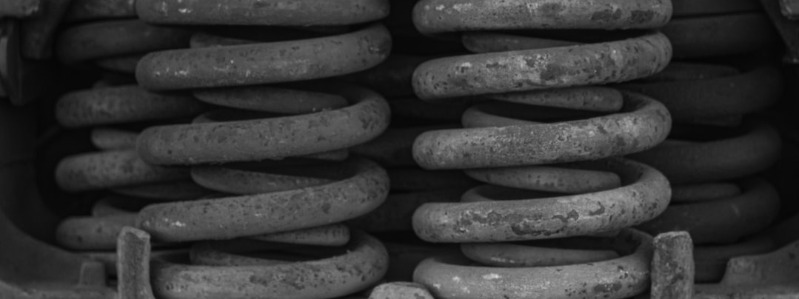Understanding when to replace your shocks
Contents
- Understanding when to replace your shocks
- What are shocks, and what do they do?
- Shocks vs. Struts: What’s the Difference?
- When Do Car Struts Need To Be Replaced?
- How long do shocks last?
- Signs that it’s time to replace your shocks
- What happens when you don’t replace your shocks?
- Types of shocks, and which is right for you?
- How much does it cost to replace shocks?
- Can I replace shocks, or do I need a professional?
- How to maintain your shocks and extend their lifespan
As a car owner, you know that regular maintenance is essential to keep your vehicle safe and running smoothly. One important aspect of vehicle maintenance is knowing when to replace the shocks. Shocks are a crucial component in your car’s suspension system, absorbing the shock and vibration caused by driving on bumpy roads.
If your shocks are not functioning properly, you can experience a bouncy, unstable ride that can be dangerous and uncomfortable. However, many people don’t know how to tell when their shocks need replacing. It’s important to recognize the signs of worn-out shocks and take action before it’s too late.
In this post, we’ll provide a definitive guide to understanding when to replace your shocks, including the signs of worn-out shocks, the benefits of replacing them, and how to choose the right ones for your vehicle.
What are shocks, and what do they do?
Shocks, also known as shock absorbers, are essential to your vehicle’s suspension system. They are responsible for controlling the movement of your vehicle’s springs and keeping your wheels in contact with the road surface. This is important because it ensures your vehicle maintains stability and control while driving. Without shocks, your vehicle would bounce and sway excessively, making it difficult to control and potentially dangerous to drive.
Shocks work by absorbing the kinetic energy generated when your vehicle hits bumps and uneven surfaces on the road. This energy is transferred from your wheels to your shocks, which use hydraulic fluid or gas to dampen the movement and slow down the oscillation of the springs. This helps to keep your vehicle’s tires in contact with the road and ensures that your vehicle remains stable and controlled.
Over time, shocks can wear out and become less effective at controlling your vehicle’s movement. This can lead to decreased handling, increased tire wear, and a less comfortable ride. It is important to recognize the signs of worn-out shocks and replace them when necessary to ensure the safety and performance of your vehicle.
Shocks vs. Struts: What’s the Difference?
When discussing vehicle suspension, shock absorbers and struts control how much your vehicle bounces during driving, but they work in different ways.
Shock Absorbers
Shock absorbers, commonly known as “shocks,” are hydraulic dampers with oil tubes. When a car hits a bump in the road, the oil inside the tube is forced through a series of small holes. This creates resistance that slows down the motion of the suspension, effectively absorbing the impact and preventing excessive bouncing. Shocks also ensure even tire contact with the road surface, ensuring better handling and control of the vehicle.
Struts
Struts are structural components that support the car’s body while helping absorb impacts from bumps in the road. Unlike shock absorbers, which only absorb vertical motion, struts also control lateral movement by linking the left and right wheels. Struts often contain springs that rebound after being compressed, providing additional cushioning and stability to the car.
When Do Car Struts Need To Be Replaced?
This is a question that many drivers often ask. Because there is no set mileage interval for replacing struts or shocks, it is important that you know when do car struts need to be replaced. This is important not only for saving your tires but also for protecting your car axles. Although your car struts and shocks are designed to last for many miles, they are just like all the other components of your vehicle—they will wear out as they miles up.
So when do car struts need to be replaced? With normal wear and tear, many auto mechanics recommend replacing car struts and shocks every 50,000 to 100,000 miles. However, if you drive in extreme conditions (bumpy or gravel roads, towing, carrying heavy loads, braking hard) consistently, you may need to replace your car struts or shocks more often. Also, if the appropriate repair is neglected, your brakes and car axles will be stressed. This will lead to two important issues to think about:
- The safety of your vehicle is compromised: Bad struts or shocks impact braking capabilities, taking longer or going further than usual to come to a complete stop. It may be harder to control your vehicle due to the vehicle’s shifting weight.
- Accelerates wear and tear: The wear and tear on your tires, springs, car axles will wear out significantly faster than normal.
A Tip to Remember: Replacing bad shocks and struts will improve the stopping performance of your brakes and restore optimum control of your vehicle.
How long do shocks last?
One of the most common questions regarding shocks is how long they last. Unfortunately, the answer is not straightforward. Different factors can affect the lifespan of shocks, such as driving conditions, vehicle weight, and how frequently the vehicle is used. Generally, most shocks are designed to last anywhere between 50,000 and 100,000 miles before needing to be replaced. However, this is just a rough estimate and can vary depending on the shocks you installed in your vehicle.
It’s also important to note that shocks can wear out gradually over time, meaning the decrease in performance is not always immediately noticeable. You might have to pay close attention to your vehicle’s handling and ride quality, and if you notice any changes or signs of wear and tear, it’s best to have your shocks inspected by a professional. Some signs that your shocks might need replacing include excessive bouncing, a rougher ride than usual, and uneven tire wear.
Ultimately, regular maintenance and inspections are key to ensuring your shocks last as long as possible and are replaced when necessary to keep your vehicle running smoothly and safely.
Signs that it’s time to replace your shocks
Shocks don’t last forever and will eventually need to be replaced. Here are some signs that indicate it’s time to replace your shocks:

Rough ride
If your vehicle feels bumpy and you can feel every bump in the road, it’s a sign that your shocks are no longer absorbing the impact of the road.
Longer stopping distance
If your vehicle takes longer to come to a stop, it’s a sign that your shocks are worn out. Worn-out shocks can cause your wheels to bounce, reducing your vehicle’s braking effectiveness.
Uneven tire wear
When your shocks can no longer support the weight of your vehicle, your tires will wear unevenly. You may notice bald spots on one or more of your tires.
Leaking fluid
If you notice oil or fluid leaks on or around your shocks, it clearly indicates that they need to be replaced.
Nose diving or squatting
If you experience nose-diving when you brake or squat when you accelerate, it’s a sign that your shocks no longer provide the necessary support.
What happens when you don’t replace your shocks?
When they wear out, you’ll notice a decrease in your car’s handling and control. If you don’t replace your shocks promptly, it can lead to serious safety issues on the road.
One of the main issues that arise from not replacing your shocks is decreased stopping distance. Worn-out shocks can lead to longer stopping distances, which can be dangerous in emergency situations. This can be especially worrying in wet or slippery road conditions where traction is already decreased.
Another issue from worn-out shocks is decreased steering and handling control. Your car’s shocks help keep your wheels in contact with the road, allowing for precise steering and handling. When they’re worn out, you may experience a loose or wobbly feeling while driving, making it more difficult to stay in control.
Worn-out shocks can also lead to uneven tire wear, impacting your car’s overall performance and safety. Your tires are crucial to your car’s ability to grip the road and maintain stability. Uneven wear can lead to bald spots on your tires, which can cause blowouts and other safety hazards.
Types of shocks, and which is right for you?
When you’re considering replacing them, there are three main types of shocks: twin-tube, monotube, and Coilover shocks.
Twin-tube shocks are the most common type. They have an inner tube and an outer tube with fluid in between. These reliable and affordable shocks make them a popular choice for most drivers.
Monotube shocks have a single tube larger in diameter than the inner tube of twin-tube shocks. This design allows for better heat dissipation, making them more durable in extreme conditions. Monotube shocks are a good choice for drivers who frequently drive on rough or unpaved roads.
Coilover shocks are a combination of a shock absorber and a coil spring. They offer superior handling, making them popular among sports car and racing enthusiasts. Coilovers are adjustable, allowing drivers to fine-tune their suspension to their driving style.
So, which type of shock is right for you? It depends on your driving style and the conditions you’ll be driving in. Twin-tube shocks are likely the best choice if you’re a daily driver who sticks to paved roads. If you’re an off-road enthusiast or frequently drive on rough roads, monotube shocks may be a better option. Coilover shocks are the way to go if you’re a racing enthusiast or want to fine-tune your suspension for optimal handling.
How much does it cost to replace shocks?
The cost of replacing shocks can vary depending on several factors. Some of these factors include the make and model of your car, the type of shocks you need, and the labor costs associated with the job. Replacing shocks can range from $250 to $1000 per shock absorber.
Replacing shocks in pairs is highly recommended to ensure consistent handling and stability of your vehicle. If the front shocks need replacing, the rear shocks should also be replaced.
Additionally, the cost can significantly increase if you upgrade to performance shocks or other high-end options. However, these upgrades can provide a better driving experience and increased safety.
It’s always best to consult a professional mechanic to get an accurate estimate of the cost of replacing your shocks. They can provide recommendations based on your vehicle and driving needs. Remember, investing in regular maintenance and replacing worn-out shocks can improve your vehicle’s handling, stability, and overall safety on the road.
Can I replace shocks, or do I need a professional?
Replacing shocks on your car can be fairly straightforward, but it’s important to understand that it requires some technical knowledge and experience. While some car enthusiasts may be confident in the task, others may not have the necessary skills or tools.
If you’re unsure, it’s always best to consult a professional mechanic to ensure the job is done correctly, efficiently, and safely. A professional mechanic can also advise you on which shocks to buy and help you understand the differences between the various options on the market.
It’s also worth noting that replacing shocks can be dangerous if not done properly. If a shock absorber is not installed correctly, it can cause the tire to lose contact with the road, leading to a loss of control of the vehicle.
It’s important to remember that your safety and the safety of others on the road should always be a top priority. So, if you’re not confident in taking on the task, don’t hesitate to seek professional help. It may cost more money, but it’s worth it for the peace of mind and safety that comes with it.
How to maintain your shocks and extend their lifespan
Maintaining your shocks is key to extending their lifespan and ensuring they perform at their best. Here are some tips to help you keep your shocks in great condition:
- Regularly inspect your shocks for any visible damage or leaks. Look for signs of wear and tear, such as cracks, dents, or rust. If you spot any damage, it’s important to get your shocks checked out by a professional as soon as possible.
- Keep your shocks clean and free from dirt and debris. Dirt and grime can build up on your shocks, causing them to wear out faster. Use a soft brush or cloth to clean your shocks regularly.
- Avoid overloading your vehicle. Overloading your vehicle can strain your shocks and cause them to wear out faster. Know the weight limits for your vehicle and always stick to them.
- Avoid harsh driving conditions. Driving on rough roads, going over speed bumps too fast, and taking sharp turns can all cause extra strain on your shocks. Try to avoid harsh driving conditions as much as possible.
- Get your shocks serviced regularly. Getting your shocks checked and serviced by a professional regularly is important. This will ensure they are in good condition and performing at their best.
We hope this definitive guide to understanding when to replace your shocks has been helpful. Properly functioning shocks are essential for the safety and performance of your vehicle. Following the tips and advice in this article, you can determine when to replace your shocks and keep your vehicle running smoothly.
Remember, it’s always better to be safe than sorry when it comes to your car’s suspension, so if you’re in doubt, don’t hesitate to get them looked at by a professional. Thanks for reading, and let us know if you have any other car maintenance topics you’d like us to cover!

